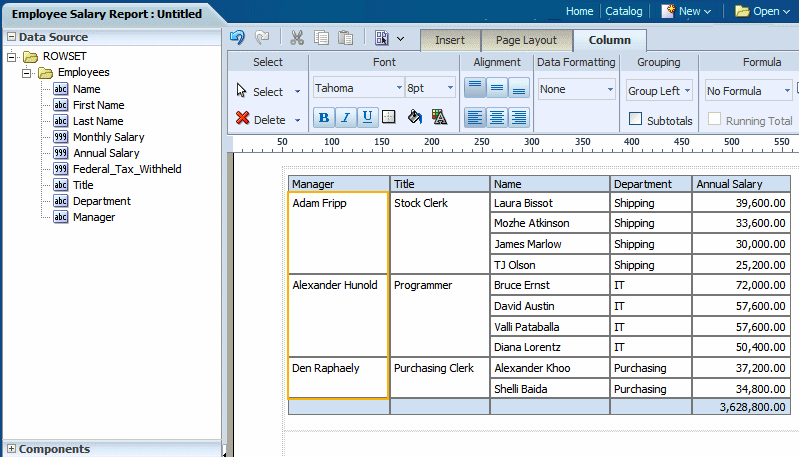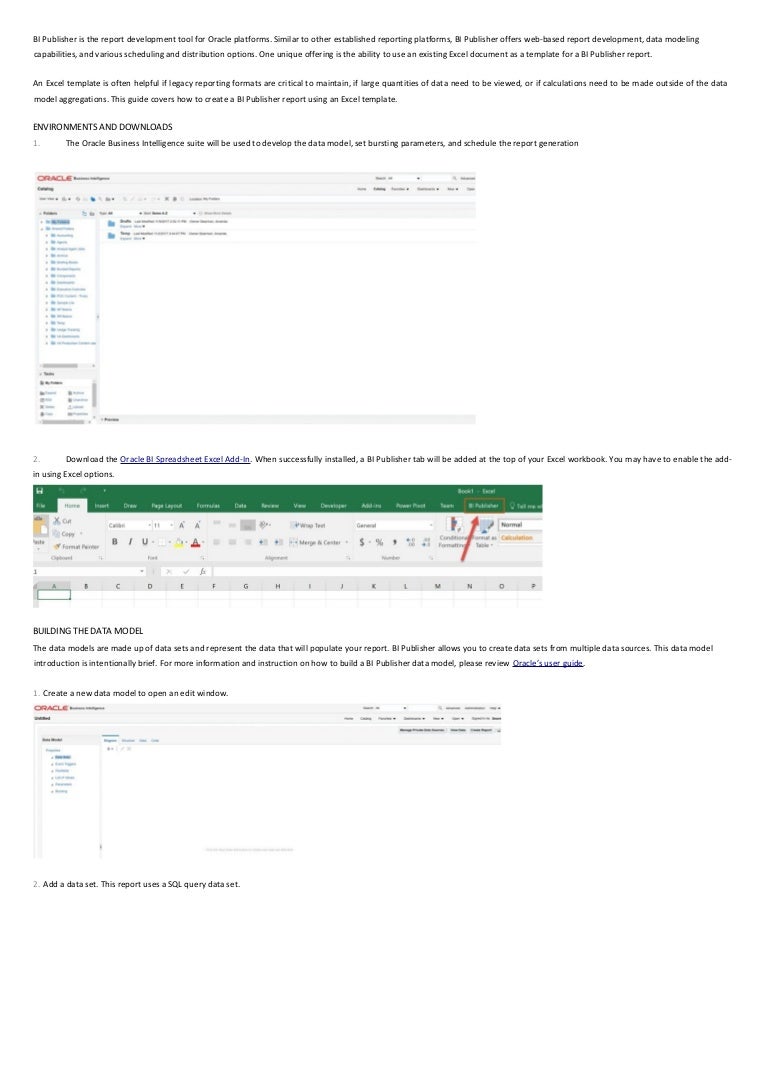

The For Each field is displayed as Group Item to inform you that an outer group is already defined. If you are creating nested groups (inserting a loop or group inside of another loop in the template), the For Each field is not updatable because it is already defined by the preexisting outer loop. In cases with multiple data sources or hierarchical XML you can choose the data set. For example if the data set is flat, the only repeatable element is /DATA/ROWSET/ROW. Note the following about creating repeating groups:įor loops and groupings not inside another group (that is, outer groups or loops) you must select the repeating XML element to be used. You would therefore select the customer number in the For Each field to create a new loop (or group) for each customer. In this case, for each customer number you want the table to repeat. When you select the For Each data field you are telling BI Publisher that for each occurrence of the selected field in the data you want the elements and processing instructions contained within the loop to be repeated.įor example, assume that the data contains invoice data for customers and you want to create a table with each customer's invoices. Select the element that for each occurrence, you want the loop to repeat. If you select New Page per Element, then a page break is inserted between each element after the first occurrence.ĭescription of the illustration GUID-037811B6-F609-41B0-A9D8-179F63CB4BBD-default.gif This property allows you to insert a page break or a section break between every data group. If the data is numeric, select Number as the sort data type. If you have selected an element for Sort By the data is by default sorted as text.

If you have selected an element for Sort By you can select if the data should be sorted either ascending or descending.

Select an element by which the data groups are sorted. If you do not want the grouping data field displayed, then select No. By default, the field you have selected to group the data by is displayed in the report. This property is shown only if you have selected a node created by the Grouping functionality. You can select a child element of the selected element as a grouping criterion. For example, you might want to group all invoices by customer. Grouping is an advanced operation that allows you to group the data by a specific element in the data.
#Excel oracle bi publisher add columns free#
If you want to insert the fields into a free-form text section that should to repeated for this element select Free Form. To display the fields below each other with labels in a table, use Form. To display the data as a horizontal table with a header, select Table.


 0 kommentar(er)
0 kommentar(er)
